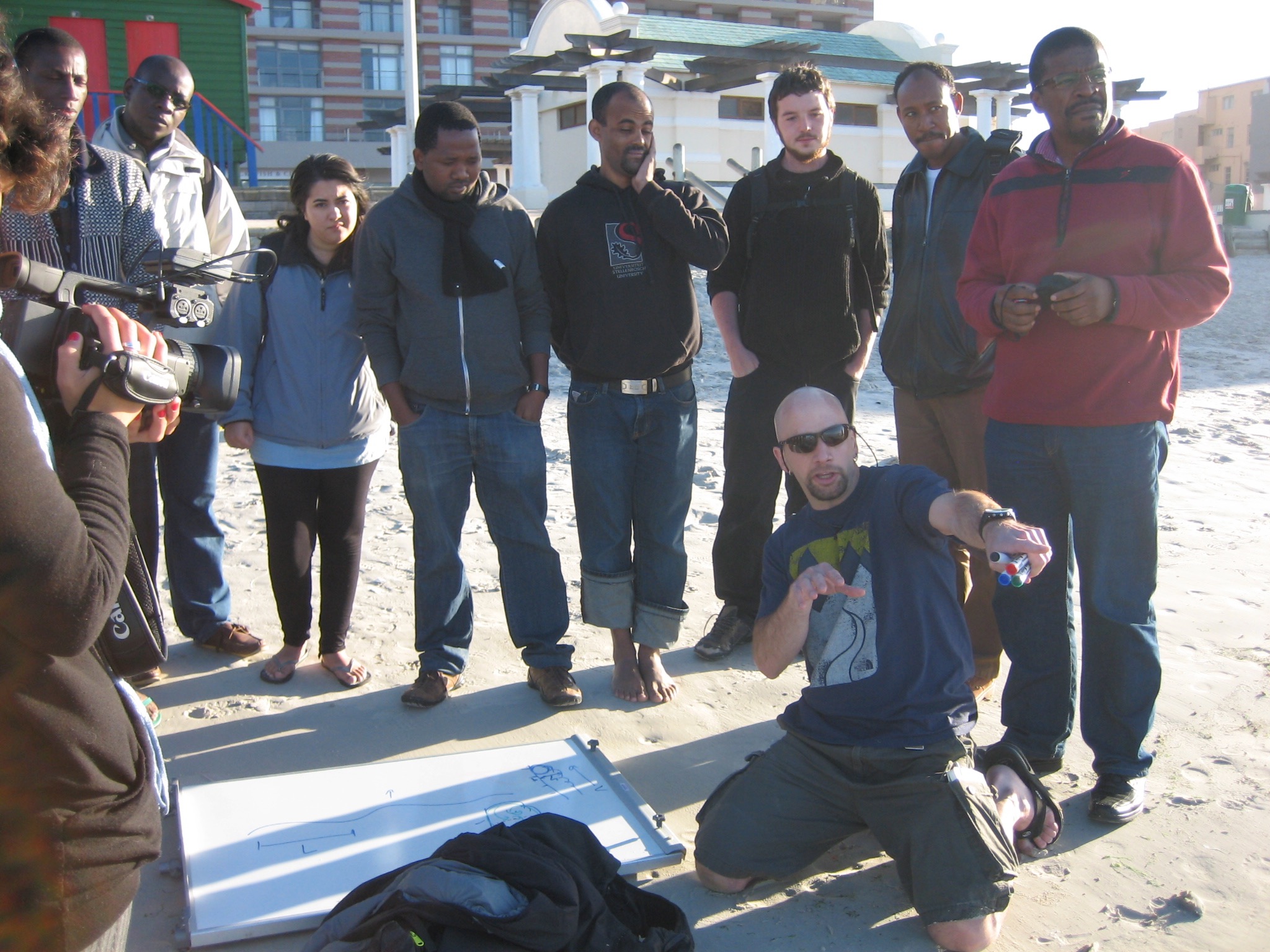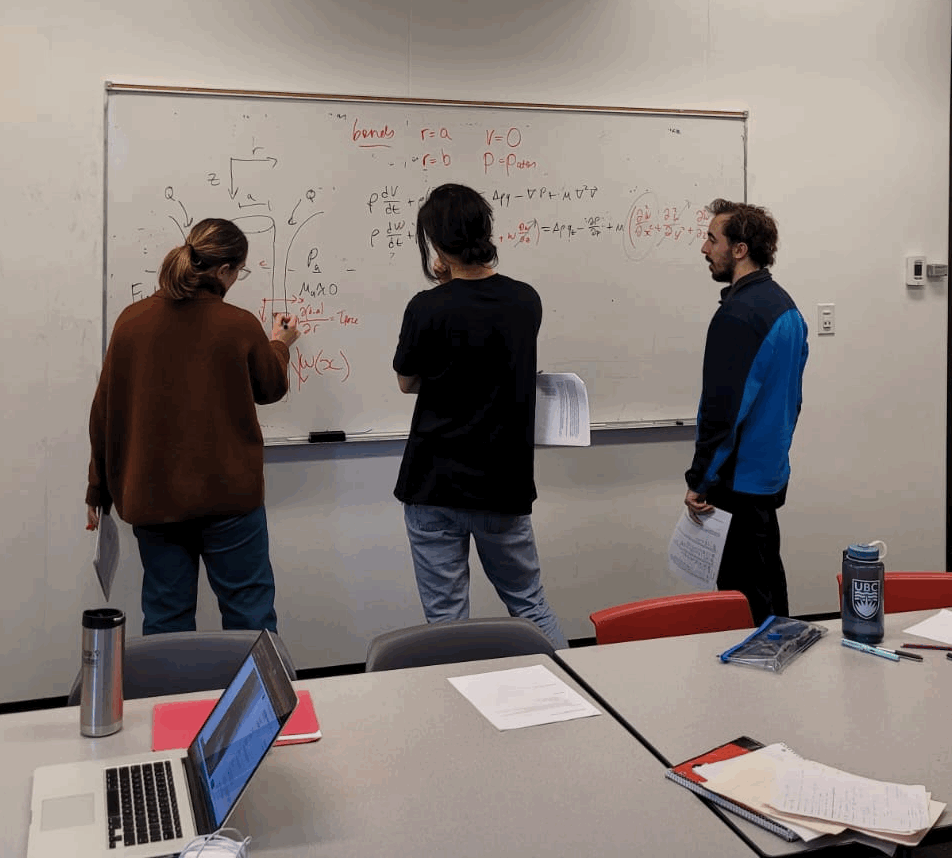|
|
|
|
|
Teaching Approach Effective teaching is very important to me. How to best enable students to grow well-beyond perceived boundaries and perform at a level they could not before imagine for themselves-- and do so with joy, a sense of wonder, and a determined connection to the world— is a central goal of my career.
In the classroom, which can be anywhere, my goal is to create an environment in which knowledge is constructed by students more than it is presented by me. An effective way “to teach science” is to do science, with my role being mostly as that of a coach who guides both deliberate practice and inquiry with intention. As an example of what I mean, think of how coffee in thick glass mug cools to the overlying air. To explain this problem in a class it is easy to envision a series of lectures that would break the issue of how hot coffee cools down into the main components of the science of thermal convection. However, no matter how inspiring my explanations might be, it is infinitely more engaging to simply place a drop of cream in the coffee and study how the motions driven by the surface cooling disperse the cream and distribute cooling across the surface and over the depth of the coffee.
To illustrate my approach more formally, in the classroom we work together to begin an analysis of the cup of coffee as a team. Drawing on carefully-trained core knowledge and skills, a first step is to observe deliberately and describe in detail everything we can about the cup, the coffee, and the response of the drop of cream. Next, we formulate questions aimed at deciphering the kinematics of cream stirring and stretching and the underlying dynamics of the cooling problem. These questions lead, in turn, to further inquiries about the physics and chemistry of the problem that could take us first to textbooks and then to research articles and finally to Mind Maps of the essential knowledge structure. Through this exercise we would gain the grounding to formulate testable hypotheses aimed at addressing precise, carefully-articulated questions. Simple experiments and calculations might follow. Some would work, some would fail and we’d learn specific lessons from either outcome. At the end of this study the students would have learned the value of the scientific method as well as the whimsy within it that can lead to the most profound success. They would have learned the value of deliberate practice-- not just practice-- of core skills. We would learn how to distinguish effective from ineffective questions, to fail and re-group, and to define and solve problems. Ultimately, we learn how to construct knowledge with intention—i.e. learn.
Courses I teach (Berkeley) EPS 104 An Introduction to Mathematical Methods in Geophysics (Berkeley) EPS 238 Solidification and Chemical Differentiation of Basaltic Magma Chambers (U.Toronto) PHYS 280 Fundamentals of Physics II (Vibrations and Waves) (U.Toronto) PHYS 225 Second Year Lab (U.Toronto) PHYS 2601 Special Topics in Planetary Physics EOSC 252 Introduction to Experimental Geophysics EOSC 450 Potential Fields in the Earth and Planetary Sciences (2005) EOSC 453 Advanced Physics of the Earth and Planets EOSC 514 Introduction to Geological Fluid Mechanics EOSC 212 Topics in Earth and Planetary Sciences EOSC 595 Special Topics (Remote Sensing of Volcanic Plumes; Mixing in Geophysical Flows; Eruption Dynamics; Planetary evolution, climate and Habitability; Core-Mantle Coupling) |
|
|
|
|
|
|
|
|
|
|

